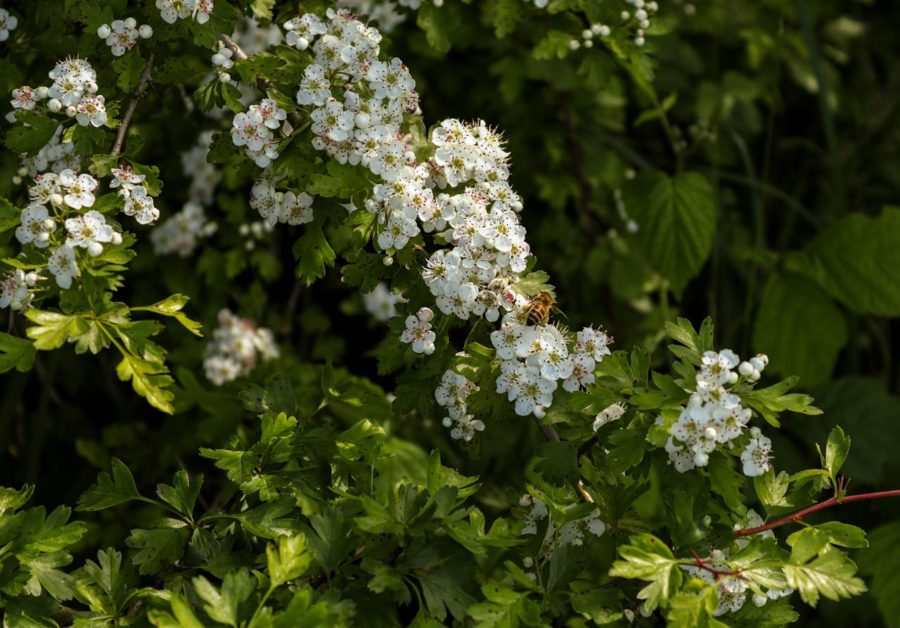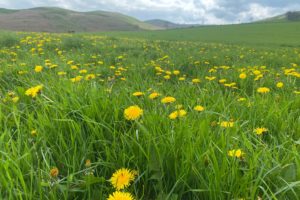This summer, I undertook the mammoth task of removing tree guards from a 500-metre length of hedge on the Ingram Valley Farm. Removing the tree guards is essential to enabling the hedge to thrive. Planted 5 years ago, the saplings have matured to a state where they are strong enough to withstand the elements and small animals needing a snack.
What is a hedge?
Hedgerows are a common feature of the British landscape. They enclose fields and orchards, parks and woodland, line narrow country lanes and enclose gardens in towns and villages. In simple terms, a hedge keeps things in and keeps things out as well as marking a boundary.
According to the UK Government, a hedge is at least twenty metres long, less than 5 metres wide and crucially contains at least 80% of native shrubs. It all sounds very clinical, but a hedge is so much more, it provides shelter from wind and rain, and shade from the summer heat. A hedge also provides a rich and diverse habitat for flora and fauna, which provides a country feast of blackberries, hazelnuts, hips and sloes for small mammals and hungry humans.
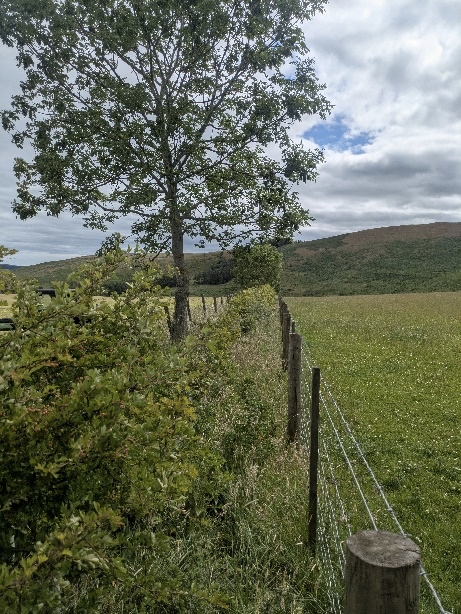
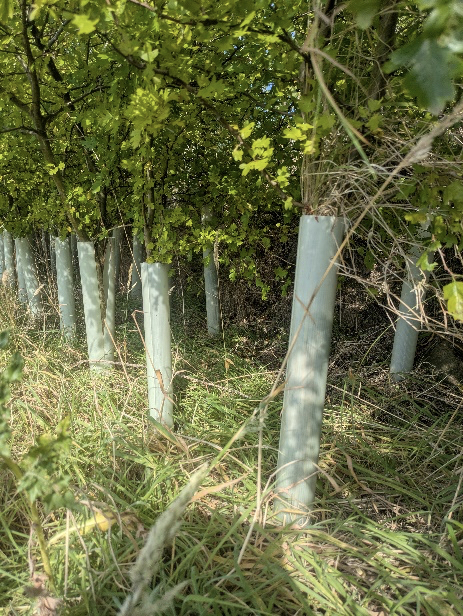
The hedge and tree guards!
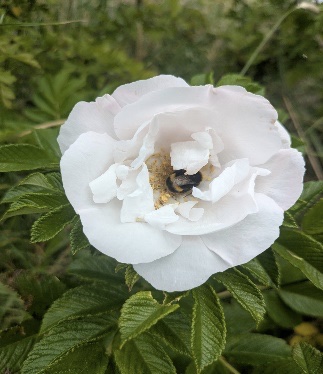
The distinct patterns of hedges throughout Britian are a result of the enclosure act introduced in the 18th century. It is a landscape we all now know and cherish. Just imagine if the act had been delayed and come in after the mass production of barbed wire fencing, how bare and bleak the landscape would look instead. Places such as Ingram benefit from tourism from visits to the café or partaking in its historical safaris. Hegde rows provide Ingram with a rural charm that enriches its historical setting, attracting visitors who value the landscape’s natural beauty and cultural heritage.
The death of a hedge
Post WW2, the UK government encouraged farmers to rip up hedges to make way for bigger machinery in the name of greater efficiency. The horticultural classic “Hedges for Farm and Garden” by J.L. Beddall published in 1950 , provides a comprehensive guide to the history of hedges, hedges and the farmer, planting and care for the hedges and much more! He wrote with the increase of mechanised farming “hedges are doomed”. He was almost right .The Woodland Trust estimates that 118,000 miles of hedges in the UK have been ripped up since 1950. This uprooting made way for urban sprawl and infrastructure, but it has come at the cost of biodiversity decline, degradation, and erosion of soil.
Why plant hedges?
However the tide has turned , we are now facing the issue, not just of food production and security, but also of environmental sustainability. Replanting hedge rows have been identified as a way farmers can reintroduce biodiversity into the British countryside and contribute to carbon capture. For the farmer there are economic advantages to planting hedges, grants are available from the UK Government. These grants are essential if the government’s aim of planting 35,000 miles of hedgerows by 2035 is to be met.
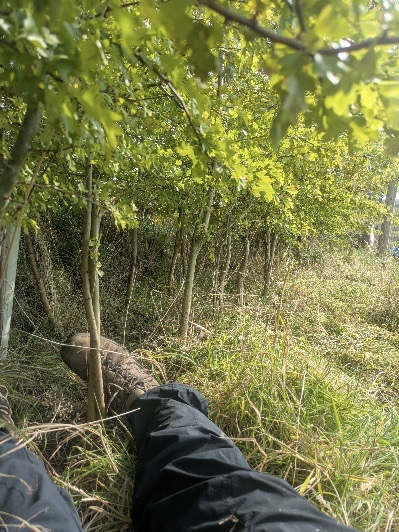
Sheltering from the summer heat
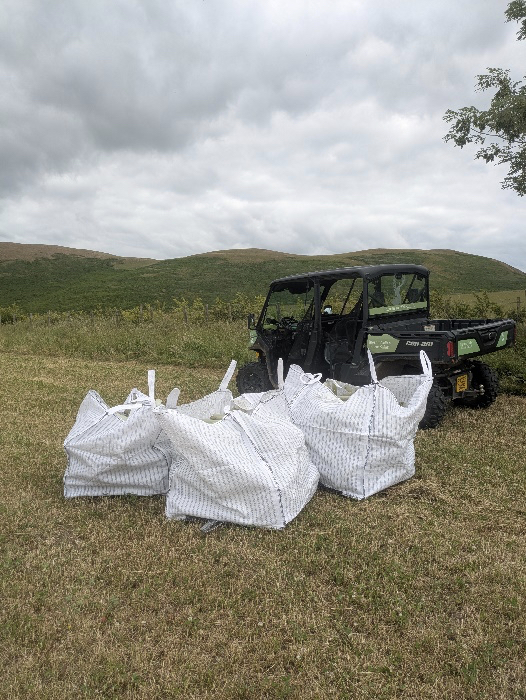
All the plastic collected in one day
How to plant a hedge
How do you plant a hedge? The general rule of thumb is to have 6 saplings per linear metre. Each sapling requires a tree guard . These thin plastic tubes, placed over the saplings, encourage the saplings to grow towards the light and prevent animals such as deer from eating the saplings. The tree guards will have to be removed after the saplings have matured, usually after 3-5 years . I removed 3,000 plastic tree guards from a 500 linear metre hedge. Most people think of hedge planting is a positive environmental thing to do without thinking of the vast quantity of plastic that is required.
Tubex who manufacture plastic tree guards have a recycling scheme, collecting old tree guards and recycling them into new ones, closing the loop of single use plastic. Ingram Valley Farm contribute to this recycling program, and this is where the 3,000 plastic tree guards, I removed were sent. Furthermore, solutions to the issue of plastic in the environment are being explored at Ingram Valley Farm. The Farm is also currently trialling the use of tree guards made from alternative non-plastic, biodegradable, more sustainable materials. If you are interested to find out more click Here .
My summer in the rolling hills of Northumberland was spent on a seemingly small but hugely important task, removing plastic from maturing hedges and removing the plastic from the landscape. The experience has shown me that hedgerows are far more than farm boundaries, they are biodiversity hotspots, cultural landmarks, and climate allies. However, it also highlights that even the most positive environmental initiatives carry unseen environmental challenges. Like us you too can help: https://www.forestplasticsworkinggroup.co.uk/plotthatplastic

